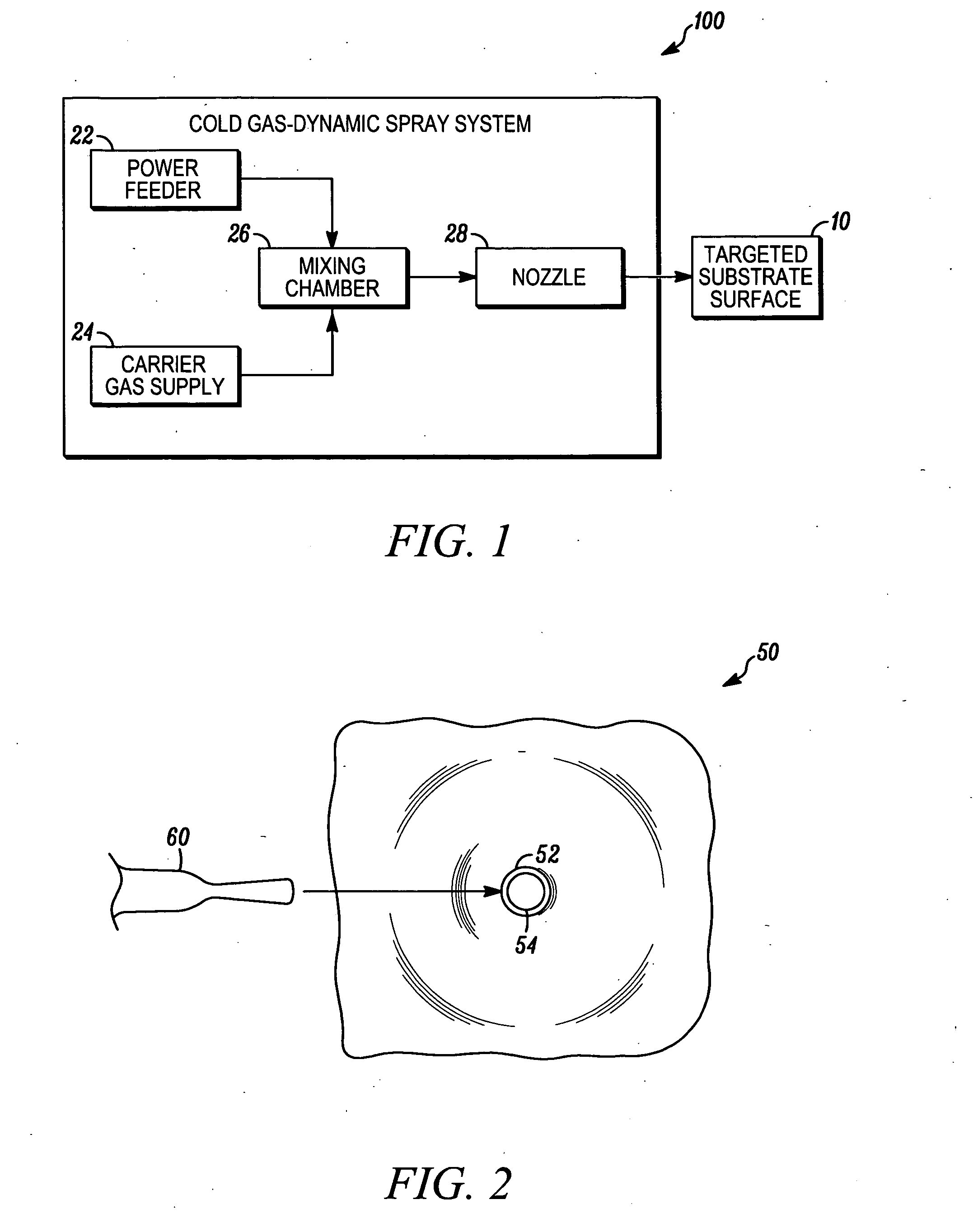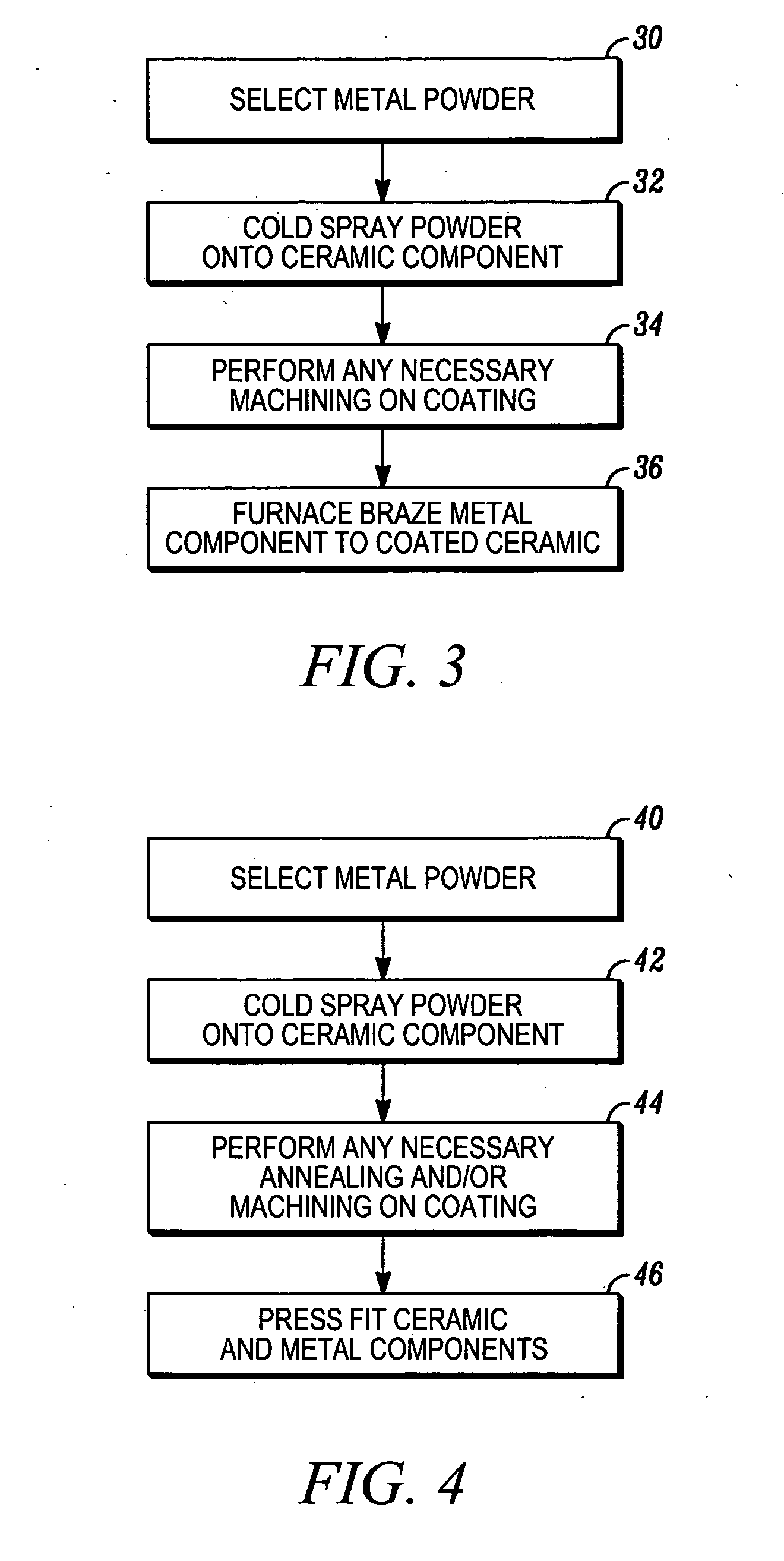Cold gas-dynamic spraying method for joining ceramic and metallic articles
a technology of ceramic and metal articles, applied in the direction of welding apparatus, manufacturing tools, welding apparatus, etc., can solve the problems of inability to re-solidify the joint, the re-solidification of the alloy grain structure may be somewhat uncontrolled, and the process may have some limitations
- Summary
- Abstract
- Description
- Claims
- Application Information
AI Technical Summary
Problems solved by technology
Method used
Image
Examples
Embodiment Construction
[0014] The following detailed description of the invention is merely exemplary in nature and is not intended to limit the invention or the application and uses of the invention. Furthermore, there is no intention to be bound by any theory presented in the preceding background of the invention or the following detailed description of the invention.
[0015] The various embodiments of the present invention provide methods for durably joining metal and ceramic articles despite any thermal expansion mismatches between the joined materials. The methods are performed using a cold gas-dynamic spraying (hereinafter “cold spraying”) process that is useful for joining a wide variety of components.
[0016] Cold spraying is a technique that uses a pressurized carrier gas to accelerate particles through a supersonic nozzle and toward a targeted surface. The cold spraying process is referred to as a cold process because the particles are mixed and sprayed at a temperature that is well below their me...
PUM
| Property | Measurement | Unit |
|---|---|---|
| Mechanical properties | aaaaa | aaaaa |
| Metallic bond | aaaaa | aaaaa |
| Melting point | aaaaa | aaaaa |
Abstract
Description
Claims
Application Information
 Login to View More
Login to View More - R&D
- Intellectual Property
- Life Sciences
- Materials
- Tech Scout
- Unparalleled Data Quality
- Higher Quality Content
- 60% Fewer Hallucinations
Browse by: Latest US Patents, China's latest patents, Technical Efficacy Thesaurus, Application Domain, Technology Topic, Popular Technical Reports.
© 2025 PatSnap. All rights reserved.Legal|Privacy policy|Modern Slavery Act Transparency Statement|Sitemap|About US| Contact US: help@patsnap.com



